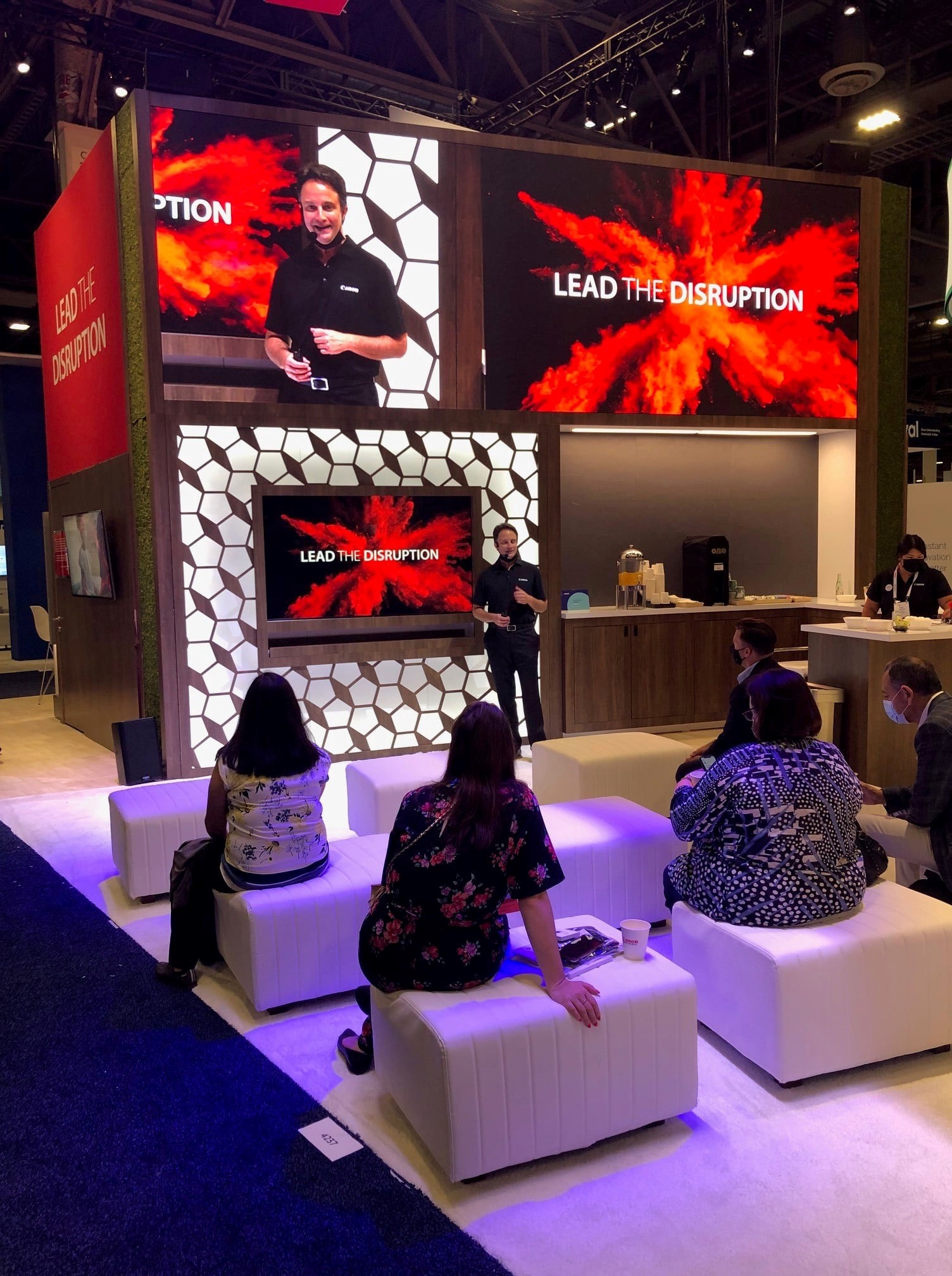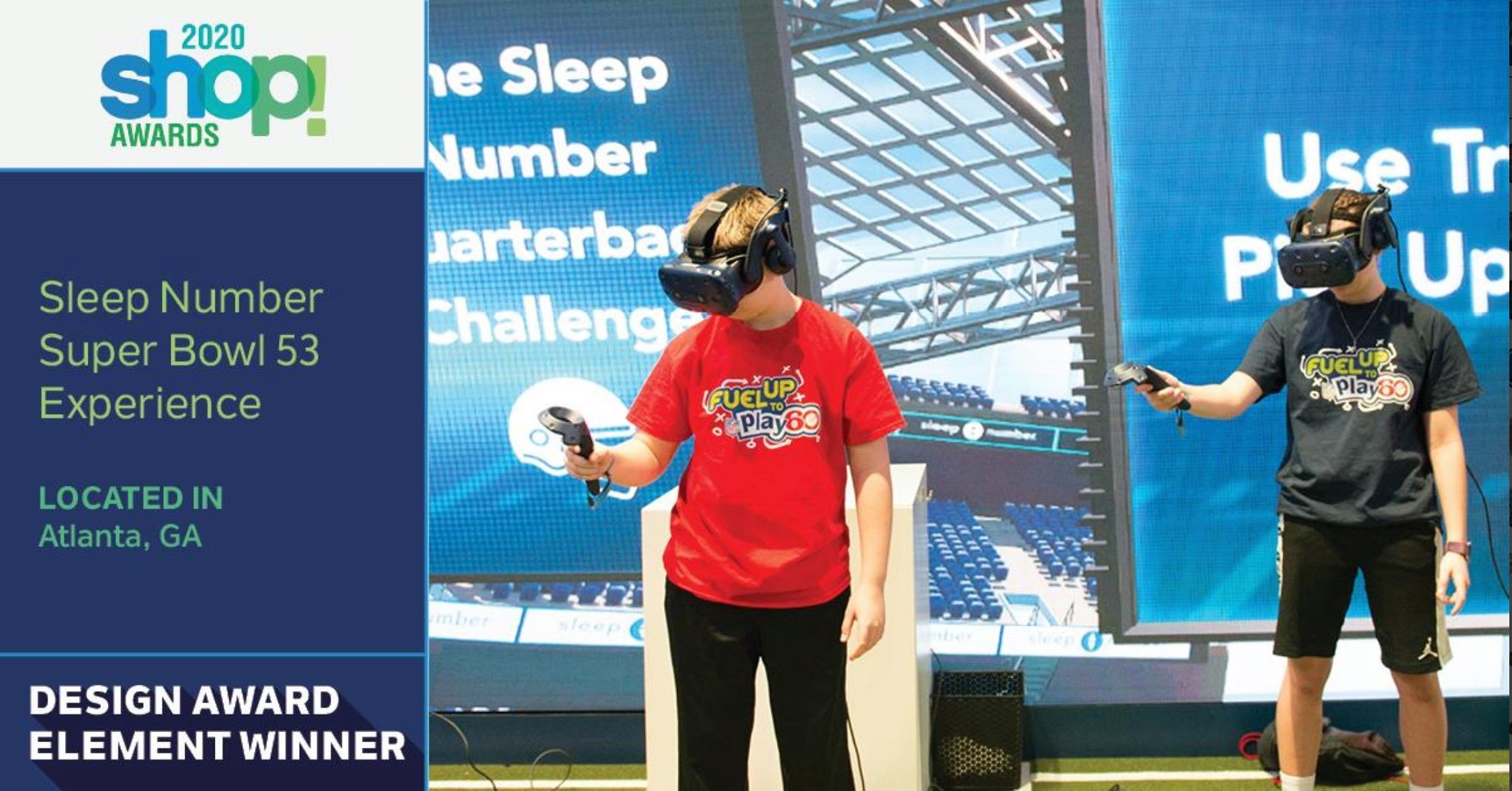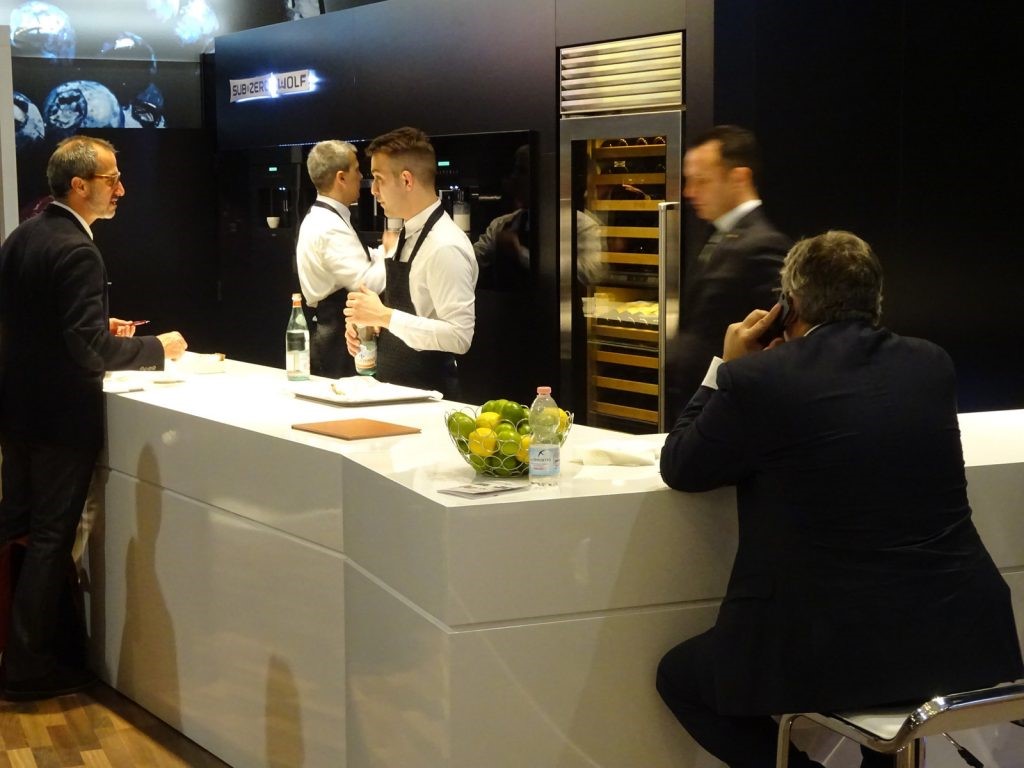Are your trade show lead counts no longer as strong as you expect them to be, even with equal or higher show attendee counts? Is your exhibit not as full as in the past, even though it’s still as high caliber as you’ve had for years? Are your booth staffers frustrated that attendees seem covered in Teflon and simply walk past your booth?
Why is this happening? You might think first that it’s the fault of your exhibit design. That’s because a good booth design had long been sufficient to drive your success. Attendees could see what you offer, and then walk into your booth to learn more.
Now, lower lead counts at a strong show are more likely due to a lack of promotions and experiences. Over the last decade the trade show dynamic has changed. Show attendees come to the show with greater product knowledge gleaned from the internet and social media. These better-informed attendees have gained the upper hand on the buying cycle, and thus don’t visit exhibitors unless it’s clearly worth their while.
Now, more than ever, you need to promote your trade show presence, with an integrated campaign before and during the show, that incentivizes attendees to visit your booth. You need to up your game to get the crowds flowing again.
Defining Trade Show Promotions, Integrated and Experiential Marketing, and Brand Activations
There are a variety of terms you may have heard to describe how you more aggressively promote your booth before and during the show. Here they are, in increasing levels of sophistication:
- Promotions can mean giveaways, specials, and offers you provide in your booth, ranging from a free pen with your logo, up to expensive gifts or significant show-only discounts.
- Integrated Marketing is when you no longer plan your trade show presence in isolation, but rather continue to promote the same marketing messages as your other media. And rather than let your exhibit design stand on its own, you promote your presence before and during the show with social media, email, advertising, direct mail, telemarketing, and more.
- Experiential Marketing is when you create immersive experiences or activities designed to connect your brand message on an emotional level with your visitors. An activity with higher degrees of purposeful marketing can also be called a brand activation.

Integrating Promotions + Experiences Into Your Trade Show Booth
The situation is not all gloom-and-doom. Integrating promotions and experiences into your overall trade show program offers many additional benefits besides generating more trade show leads, including:
- Improving your brand perception
- Increasing message consistency across marketing media
- Boosting attendee memorability after the show
- Creating an emotional connection to your brand
- Leveraging your existing database to advance the buying cycle with key prospects
- Increasing the number of face-to-face customer meetings for cross-selling, relationship strengthening, and problem solving
- Standing out from neighboring exhibitors who do too little to promote themselves
- Making it easier for booth staffers to engage attendees so staffers are more willing to work future shows
- Shocking overwhelmed attendees into a more receptive state of mind, thus more capable of positively absorbing and remembering your campaign theme and marketing messages
Creating An Integrated Marketing Campaign For Your Trade Show Exhibit
If you feel uncomfortable embarking on a creative campaign, here is a proven process you can follow:
- First, strive to know everything about your buyers. Determine what they look like demographically, what matters most to them, what language they use, why they are coming to the show, and what they are looking for there.
- Then, brainstorm campaign ideas that will hook your best buyers. Places to get ideas include:
- Your company’s current marketing campaigns in other media. Is there a print ad, direct mail campaign, or successful email campaign being used now or soon to be released? And rather than copy it exactly, adapt it for a face-to-face, live experience.
- Top buyer concerns: Create campaigns that call attention to your competitive advantages that matter most to your best buyers.
- Offers that tie thematically to your message or benefit, so visitors will more easily remember it.
- Themes tied to the event host city, the time of year (such as holidays), or if it’s at a special event (such as the Super Bowl), tie your campaign theme to that event.
- Finally, train your booth staff to participate in your integrated campaign. When booth staff know how to connect the offer to your marketing messages, your attendees will have a better experience.

Trade Show Promotion Tips
If you’re planning to make promotional gifts and giveaways the offer in your integrated trade show marketing campaign, here are 6 tips to help you succeed:
- Ask for help, if you are not the person who does email marketing, social media marketing, and advertising campaigns in your company. Your exhibit house will also have team members with experience. You can also ask your top salespeople to give you insights into what drives your key buyers.
- Know your buyer’s demographics. Select promotions that appeal to the demographics you’re targeting, not necessarily what you think is cool. That said, tech gifts are now strong incentives for almost any show audience.
- If you want to attract just about anybody from the show attendees to visit your booth, then offer something valuable that would appeal to their demographics. If you only want a small segment of the attendees, then consider offering education or other items only of value to help them with their job.
- Use the media that works best: Exhibitor Magazine survey of your fellow exhibitors says the best pre-show media are email (30%), social media (26%), personal calling campaigns (13%), print/web advertising (11%), and postcards/letters (10%).
- Consider tiers of giveaways, offering inexpensive gifts for any booth visitor, plus more valuable gifts to clients and key prospects.
- Avoid rush charges and more expensive shipping on custom imprinted giveaways by planning in advance and ordering with enough lead time. Include in that lead time receiving and evaluating promo samples – wise to do, as what you see online or in a catalog may not be high enough quality in reality for your booth visitors.

Trade Show Experiential Tips
What is an experience within a trade show? It’s when you change your booth from a product show case into a stage for customers to experience your brand. You create a personalized interaction that helps attendees feel with their senses some key aspect of your brand and marketing message. Here are 7 tips to help you:
- Your activity or brand activation can be fun or scary or trendy or unexpected. It can tell your story and take visitors on a journey. But it must be relevant to your buyer and be true to your brand.
- Create experiences that will emotionally matter with your target audience, even if the experience is not directly about your product. If your booth visitors undergo an activity that proves viscerally that you understand and care about what matters to them, you’ve won.
- However, you can still do a product demo, but take your demo to a higher level. Create an activity that goes beyond trying the product, to dramatizing your product’s key strengths or differentiators in a unique, super memorable way.
- Integrate technology into experiences when the tech greatly advances the story without interfering with attendee/staffer interactions.
- Leverage people’s greed and competitiveness with games and contests that compel attendees to learn about your products while they compete for prizes and recognition.
- Consider one-to-many versus one-to-one interactions. For example, if you do a Virtual Reality experience in your exhibit, then simultaneously display on a large screen what an individual visitor is seeing on their VR headset, so many others can participate and be intrigued to try it.
- Planning for an experience takes even more time. You need more time to create, coordinate, source, and train. Time to test the activity yourself or with trusted colleagues, to ensure it creates the experience you want. Plus, if you are using an existing structure, you may need to reconfigure it (graphics, layout) to accommodate the activity. And if you are building a new exhibit, work with your exhibit house to integrate the experience into the overall design.

Budgeting for Trade Show Promotions + Experiences
How much should you spend on your integrated marketing campaign? And how do you get that budget approved?
The Center for Exhibition Industry Research (CEIR) found that the average exhibitor spends 13.7% of their budget on promotions. This percentage has been steadily increasing over the years. Exhibitors are investing a higher portion of their budget on promotions, because promotions work and they’re necessary.
That’s because executing a successful integrated marketing campaign can increase your trade show Return On Investment (ROI). If you spend an extra 13% on a campaign (media, creative, at-show offers, giveaways, interactives), but it brings you 30%, 50%, or even more leads, you’ve dropped your average cost per trade show lead and boosted your ROI.
A key reason trade shows have changed is because the audience has changed. Younger attendees have grown up with technology, and expect entertainment at their fingertips. Millennials are now the largest generation in the workplace, exceeding Baby Boomers. And according to CEIR, younger trade show attendees value promotions and experiences. Younger attendees, in deciding which booths to visit:
- 50% consider giveaways
- 42% want to be entertained
- 41% want video, touch screens, digital media
- 40% want games and prizes

Overcoming Other Hurdles to Trade Show Promotions + Experiences
If you still need justification or help getting an integrated marketing campaign approved, consider these additional points:
- Change the expectation of your management about the role of the trade show producer: The job of the show is primarily to get viable buyers to their show floor. But even those valuable attendees can’t possibly visit even a fraction of all the booths at the show. Therefore, your job is to get the right attendees from the show floor into your booth.
- If you lack the time to create and execute promotional campaigns, delegate this task or delegate other, less important tasks. With the investment you already are putting into shows, and the potential increase in results when done right, it’s worth it. Also, you can create campaigns designed to be repeatable at future shows, making it easier going forward.
- If all else fails, ask to do a trial campaign for a smaller show. Then document the improved results compared to the extra cost. (For example, spent 10% more, but generated 40% higher number of qualified leads than previous year). More than likely, you will have boosted lead counts by a higher percentage than you increased your overall trade show budget. And make a stronger case to do even more promotions.
Start Your Integrated Trade Show Marketing Campaign To Exceed Your Goals And Surpass Your Competitors
A well-designed exhibit is now table-stakes in competing on the trade show floor. To get full value out of trade shows, more and more exhibitors depend upon integrated marketing campaigns that help them stand out. Anything from on-message giveaways up to full-on brand experiences can increase your lead counts and trade show ROI, plus make your overall program more successful and relevant with buyers.
We hope this article has helped you better prepared to integrate marketing campaigns within your trade show exhibit program. If you’d like to brainstorm with an experienced industry colleague about how your company could get started, we would love to help. Simply call us at 651-578-3600.

